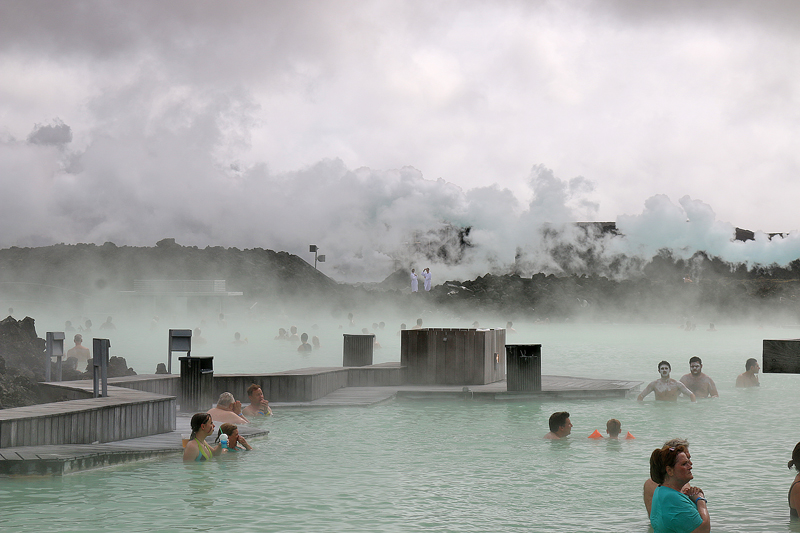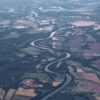Note: This article pertaining to Why I Did Not Go Into the Blue Lagoon in Iceland was originally published on Saturday, October 13, 2018 at 9:46 in the evening and has been updated.
I have heard a lot about the Blue Lagoon in Iceland and how it is apparently a destination on the list of anyone who visits Iceland — especially as it is one of the most visited destinations in Iceland — and is located only approximately 12 miles from Keflavik International Airport, which is a drive of 20 minutes or so…
Why I Did Not Go Into the Blue Lagoon in Iceland
…but as I was doing my research, my desire to visit the Blue Lagoon waned more and more; so I decided not to purchase a ticket for admission.
Still, the Blue Lagoon was on my way from the Valahnúkamöl Cliffs to the Krýsuvík thermal area — so I thought I would stop by and see exactly on what I was missing out; and perhaps I might somehow still be able to pay for admission if I changed my mind.
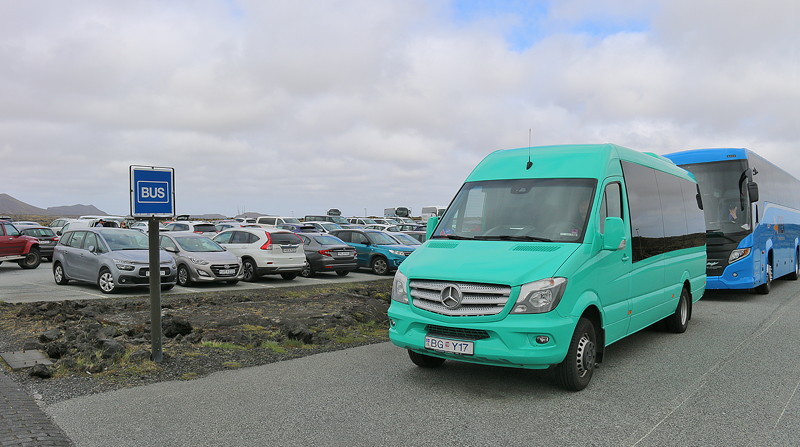
The parking lot was filled with cars, vans and buses. Parking is free of charge. I do not like crowds; so I was already thinking that I made the right decision not to purchase a ticket in advance.
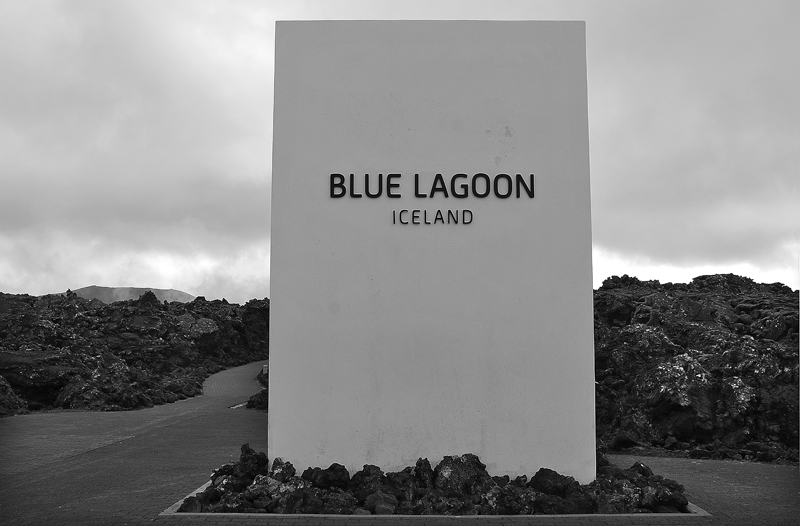
This is the sign which greets visitors at the entrance.
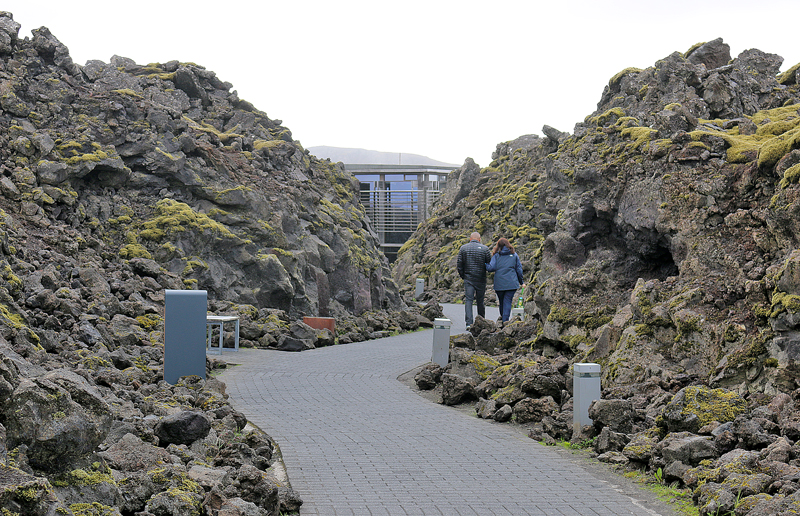
Behind the sign is a paved path which winds amongst the rocks. The walk of several hundred yards or so takes a few minutes from the parking lot to the door.
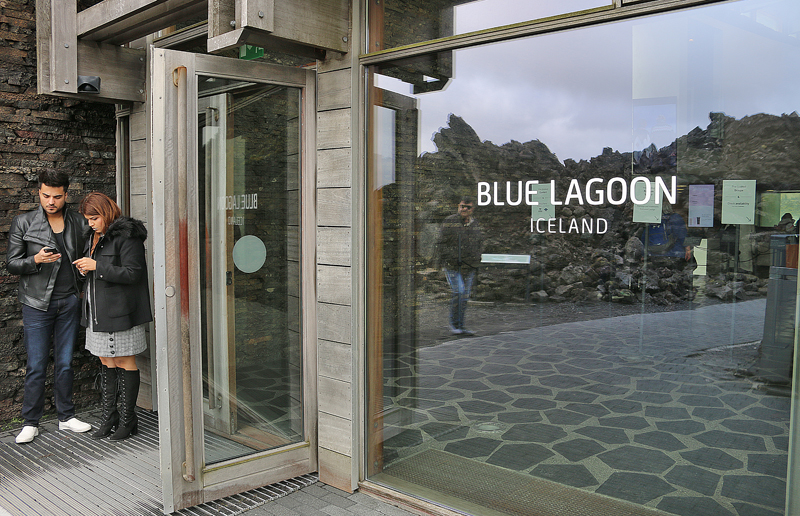
Visitors must pass through this door of the main entrance of the reception building to gain access to the Blue Lagoon.
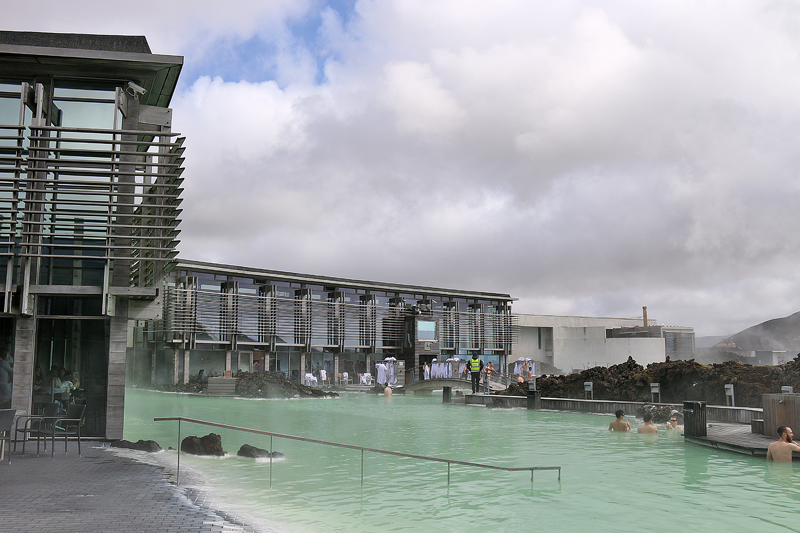
The first thing I noticed is that the lagoon is not blue, but rather a sickly shade of green.
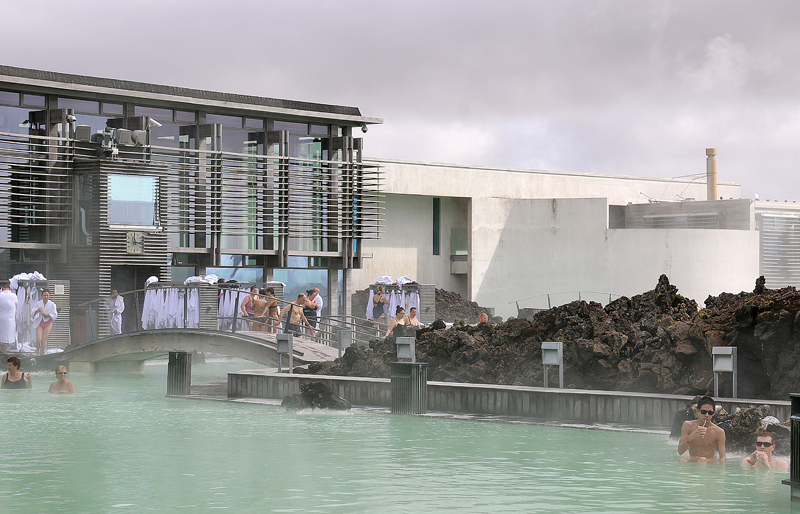
The lagoon is not even fed by a spring or formed naturally; but rather, it is man-made and artificial. When a pool formed at the site from the waste water of the geothermal power plant which had just been built there in 1976, some people considered that an environmental disaster — and some people still feel that way today despite the perceived positive and beneficial aspects of the Blue Lagoon.
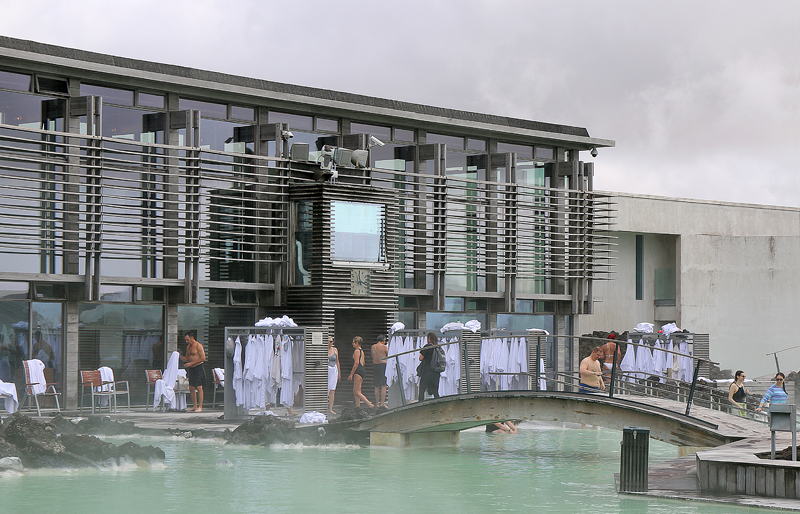
The Blue Lagoon — which was established in 1992 when the bathing facility opened to the public — is situated close to the first renewable methanol plant in the world, which uses a fuel process to convert carbon dioxide to methanol. Because its citizens highly respect the environment in which they live, Iceland is known for using geothermal energy as a source of heat for generations.
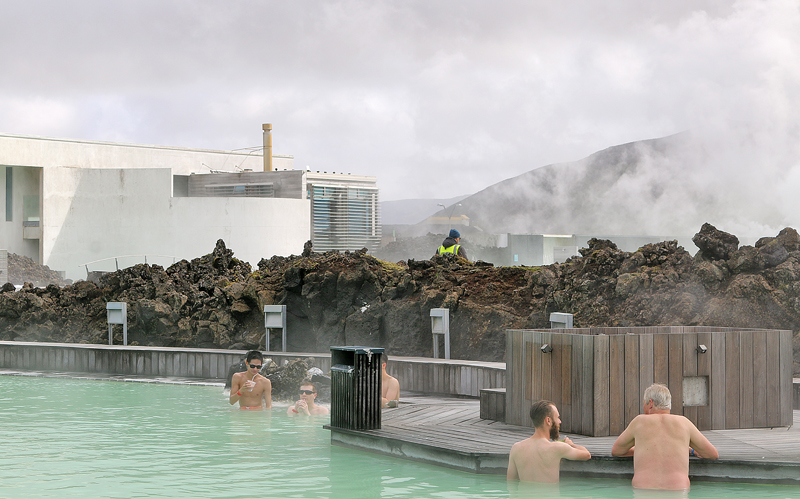
“Since the water is continually streaming into the lagoon, all the water is renewed in 48 hours, making sure it stays clean”, according to this article written by Nanna Gunnarsdóttir for Guide to Iceland. “The first person to bathe in it was a young man called Valur Margeirsson. He had Psoriasis and wanted to try anything to help relieve the skin.” People started bathing in it in 1981 after its purported healing powers were popularized — especially for skin diseases.
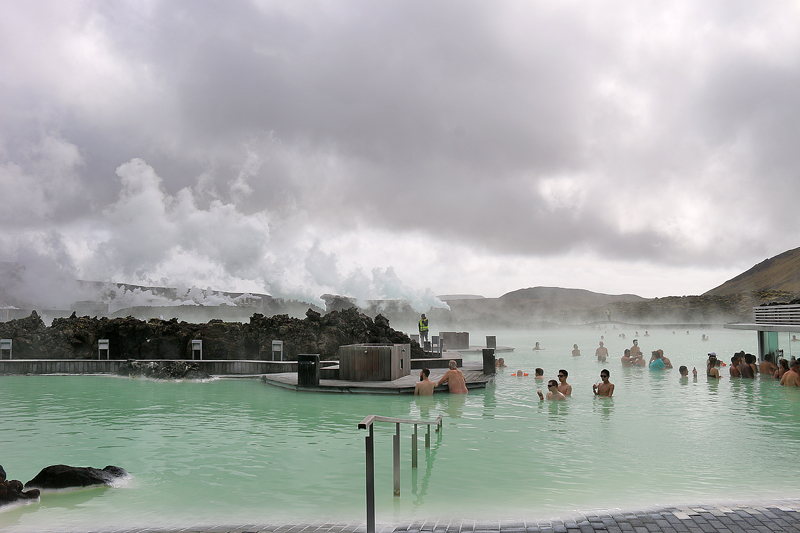
Water — at the very hot temperature of 392 degrees Fahrenheit — is vented from the ground near a field where lava once flowed; and it is used to run turbines which generate electricity. The silica in the water formed mud and created a thick layer in the otherwise porous lava so that the water no longer seeped into the lava and disappeared. That layer resulted in the formation of the lagoon because it held the water in place.
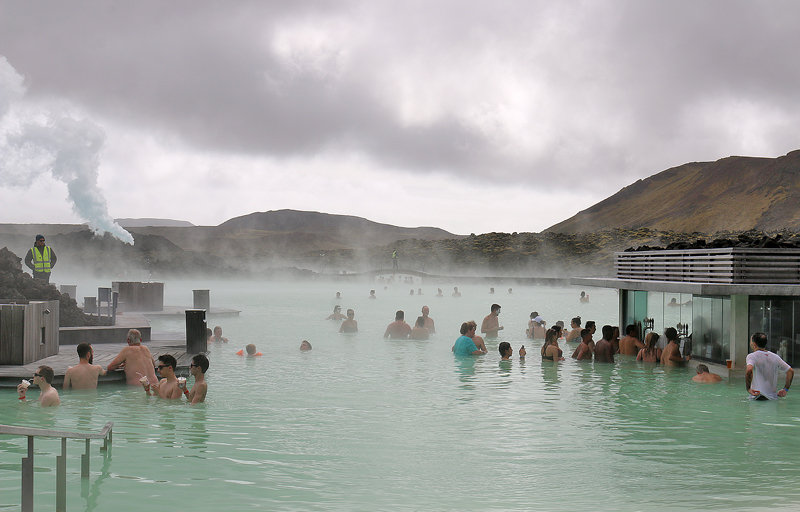
After passing through the turbines, the steam and hot water go through a heat exchanger to provide heat for the municipal water heating system before then being fed into the lagoon in which bathers can enjoy its recreational uses and purported medicinal properties.
While nothing is theoretically wrong with that, it is still not a natural process.
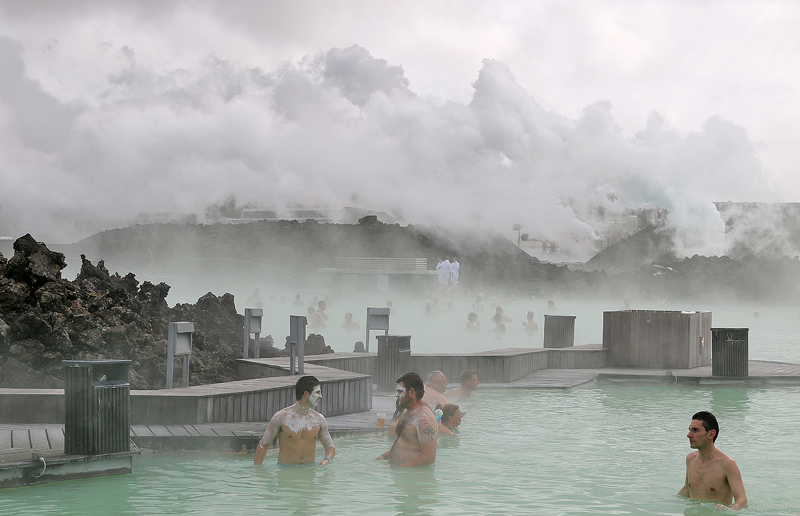
The Blue Lagoon can get quite crowded. In the background are more bathers in the water; and above them are people wearing white robes while standing.
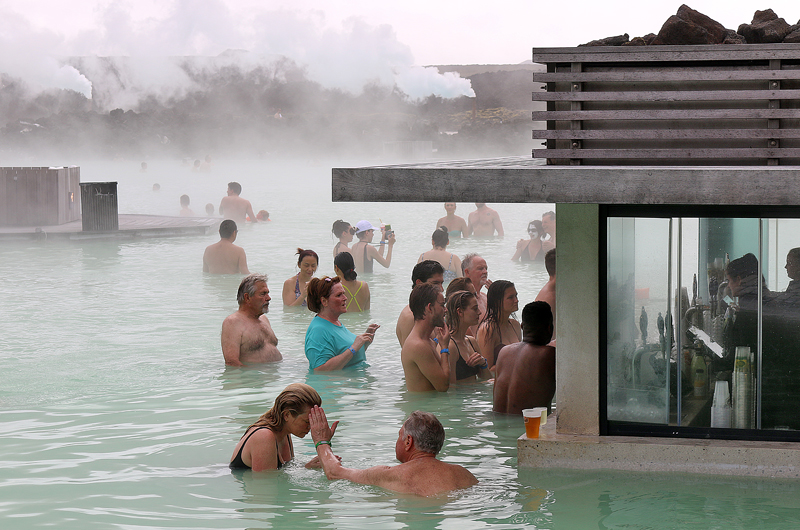
Bathers line up at the waterside bar to order drinks.
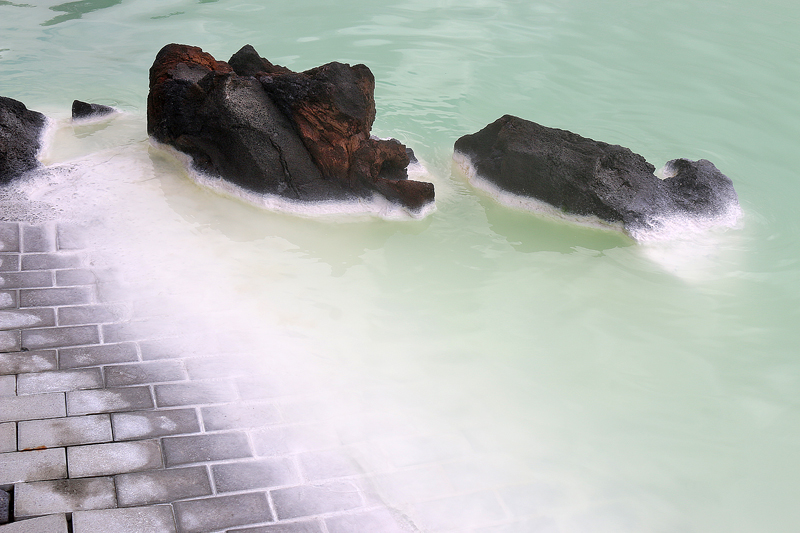
The white silica deposits are easy to see at the edge of the water.
Final Boarding Call
The reasons why I decided not to purchase a ticket for entrance to use the Blue Lagoon is because it was too expensive for my taste, it would most likely be too crowded for me, and the lagoon itself was not formed naturally.
Even though I returned to Iceland in 2024, I still had no desire to go into the Blue Lagoon.
I was not willing to pay $84.00, which was the typical entrance fee for the Comfort package in 2018 — and I certainly was not willing to pay $98.00 in 2025. Because I was driving around virtually the entire country of Iceland, I found something of a thermal option which was better for me — as well as free of charge. For me, that was the right decision.
If you really must indulge in thermal waters and your time is limited, the Blue Lagoon may be your only option — if you are willing to pay as low as $82.00 for a day visit. Admission fees are discounted for children; and infants younger than two years old are not permitted in the lagoon.
Keep in mind that prices are not set; but rather, they fluctuate based on factors such as availability. $98.00 in United States dollars is the minimum you should expect to pay for the experience in 2025.
Tickets for admission must be purchased in advance. If you want to store your luggage, each bag cost 550 Icelandic krona in 2018, which was approximately $4.75 in United States dollars. Expect that service to be more expensive in 2025.
Blue Lagoon
Nordurljosavegur 9
Grindavík 240
Iceland
+354 420 8800
Opening hours are:
- Summer opening hours June 1 through August 20: 7:00 in the morning through midnight
- Winter opening hours August 21 through May 31: 8:00 in the morning through 10:00 in the evening
- Christmas Eve 8:00 in the morning through 4:00 in the afternoon
- New Years Eve 8:00 in the morning through 6:00 in the evening
Restaurants and lodging have their own hours.
Guests are requested to exit the water 30 minutes prior to closure.
Admission Fees
All ticket prices are in United States dollars:
Comfort Package |
Premium Package |
Signature Package |
Retreat Spa Package |
|---|---|---|---|
|
Between $98.00 and $149.00 per person
|
Between $124.00 and $175.00 per person
|
Between $154.00 and $205.00 per person
|
Priced from $760.00 per changing room for up to a maximum of two guests
|
For the purpose of comparison, ticket prices for the following packages in 2018 were as follows:
Comfort Package |
Premium Package |
Retreat Spa Package |
|---|---|---|
|
From 6,990 Icelandic krona
|
From 9,900 Icelandic krona
|
From 29,500 Icelandic krona
|
All photographs ©2018 by Brian Cohen.
